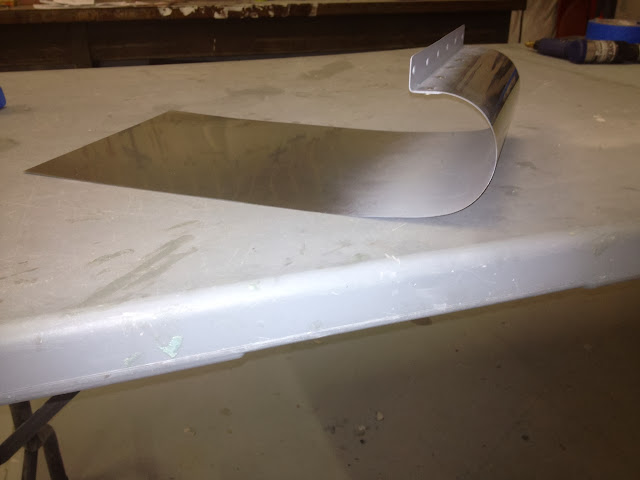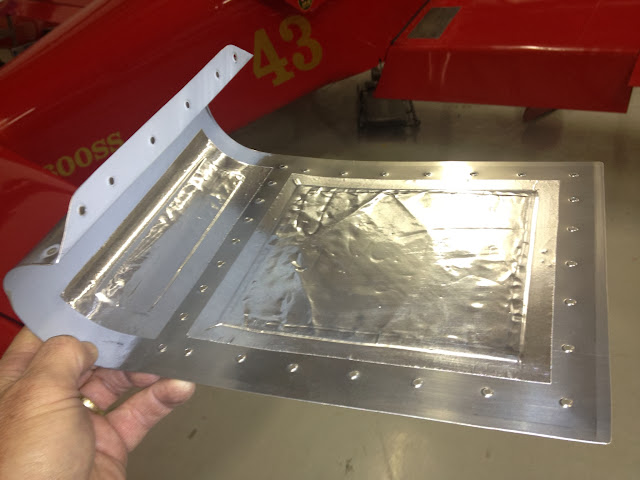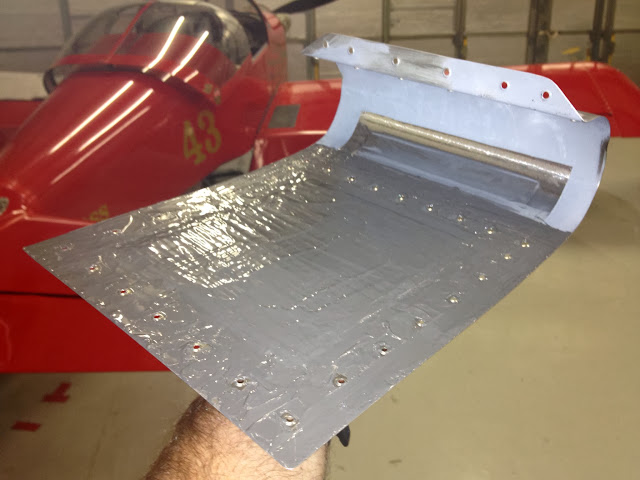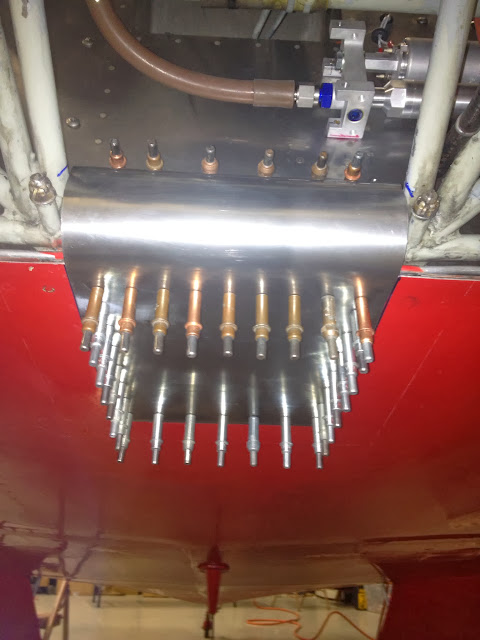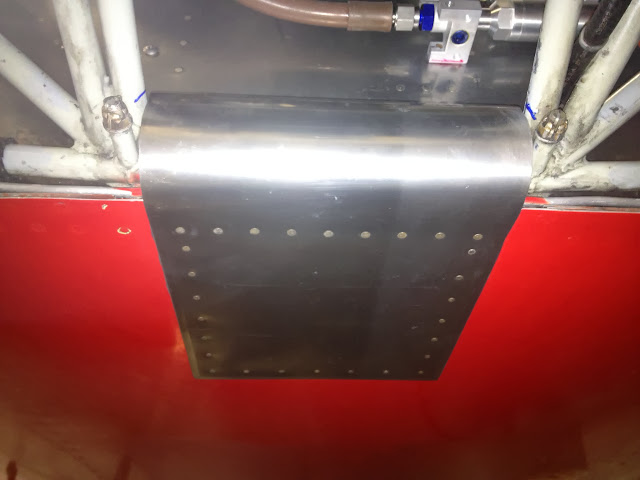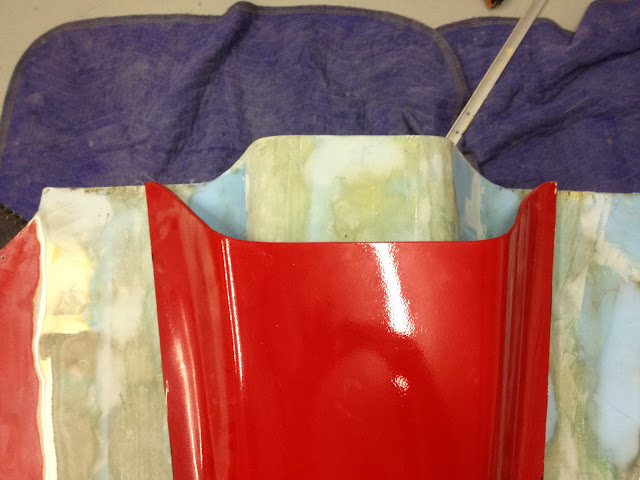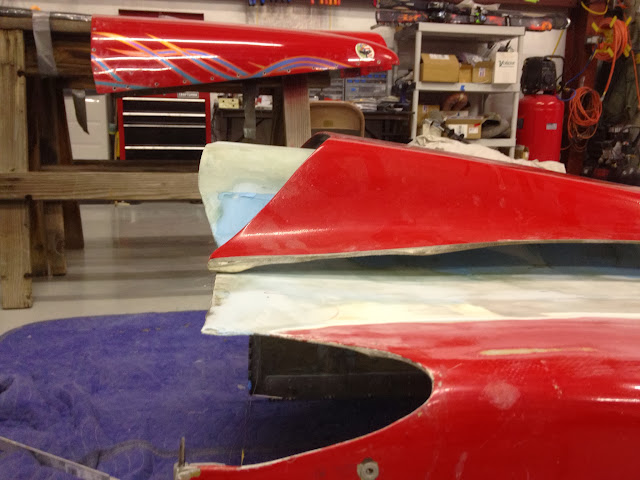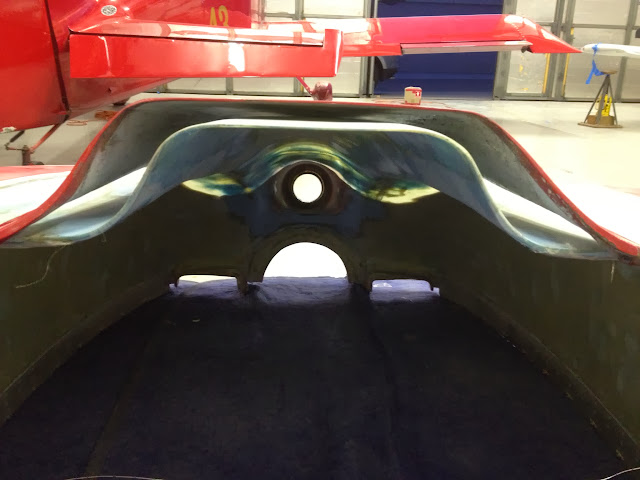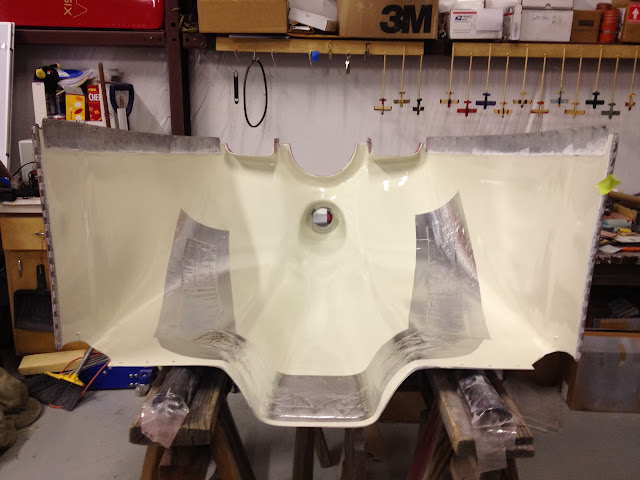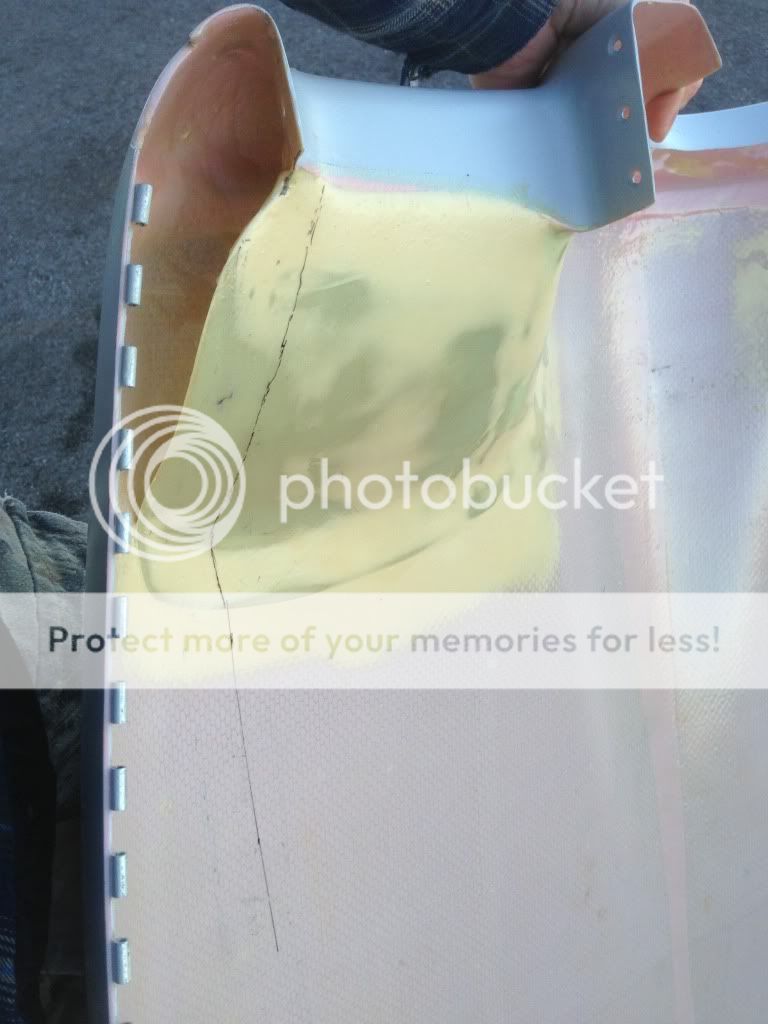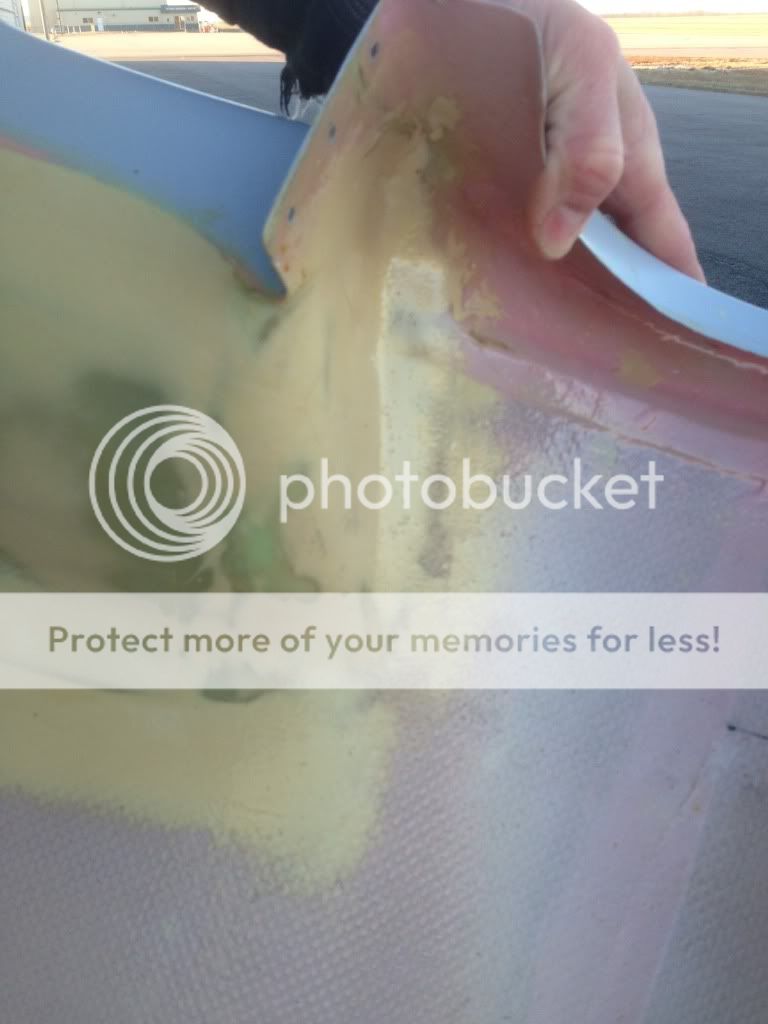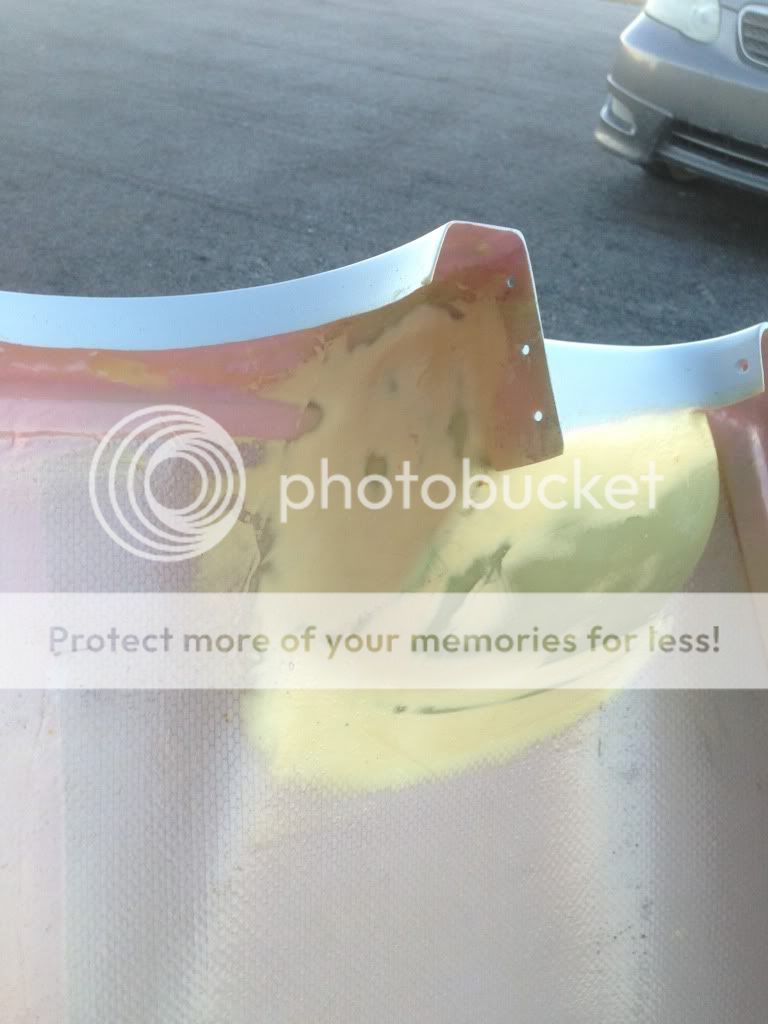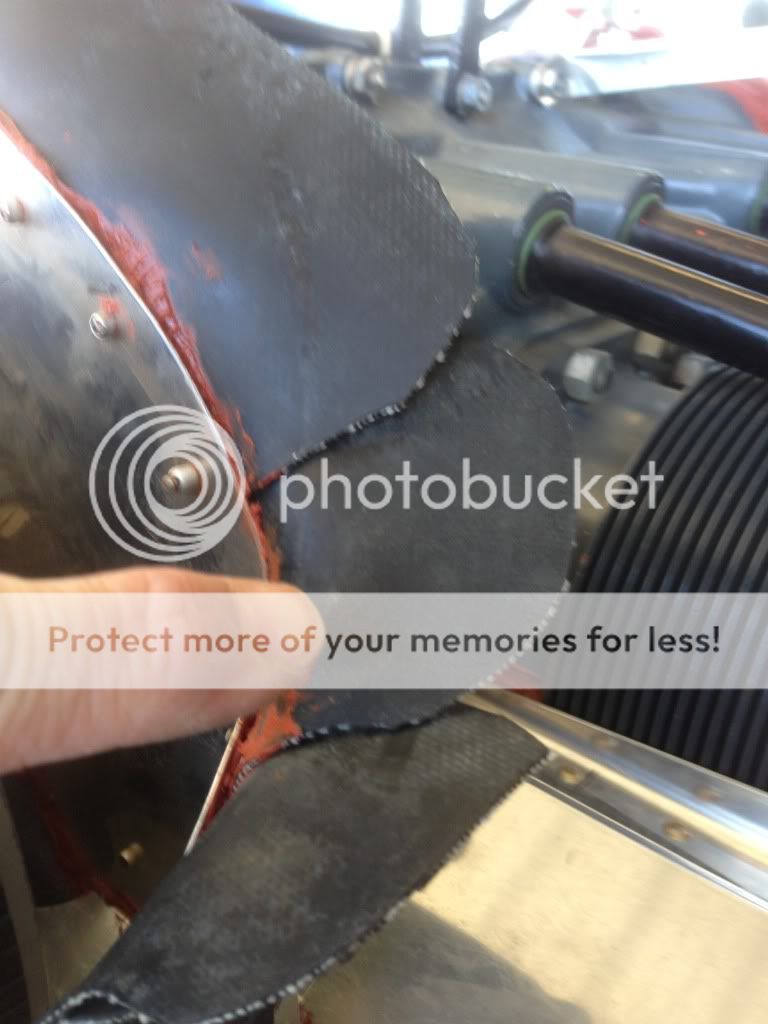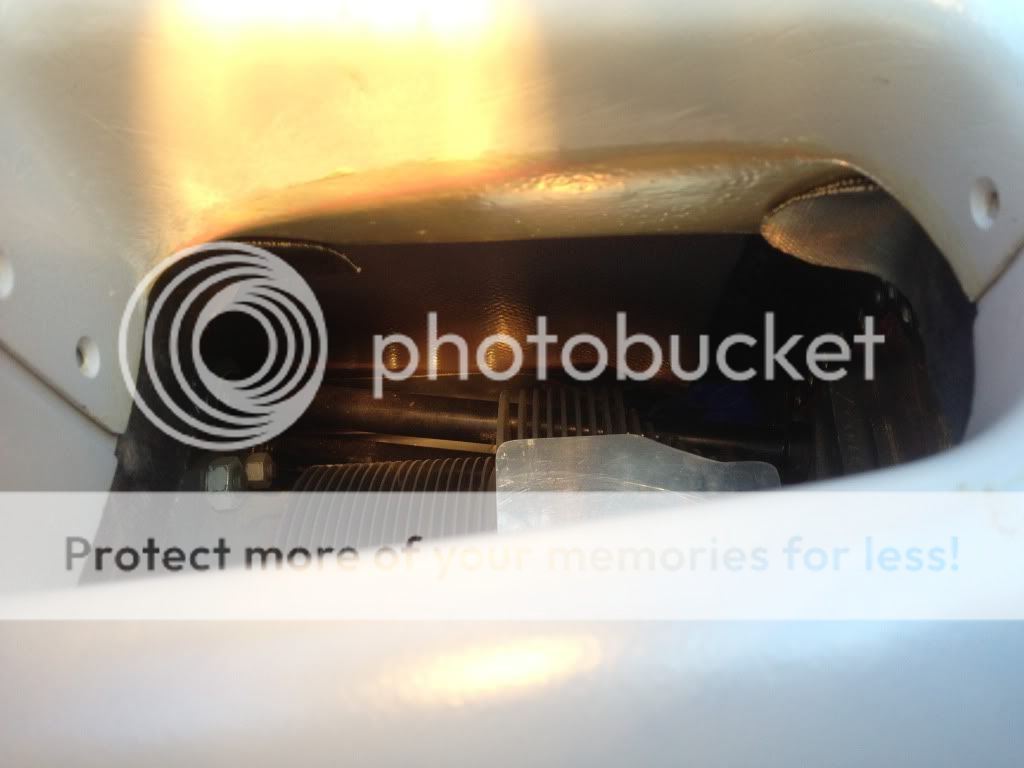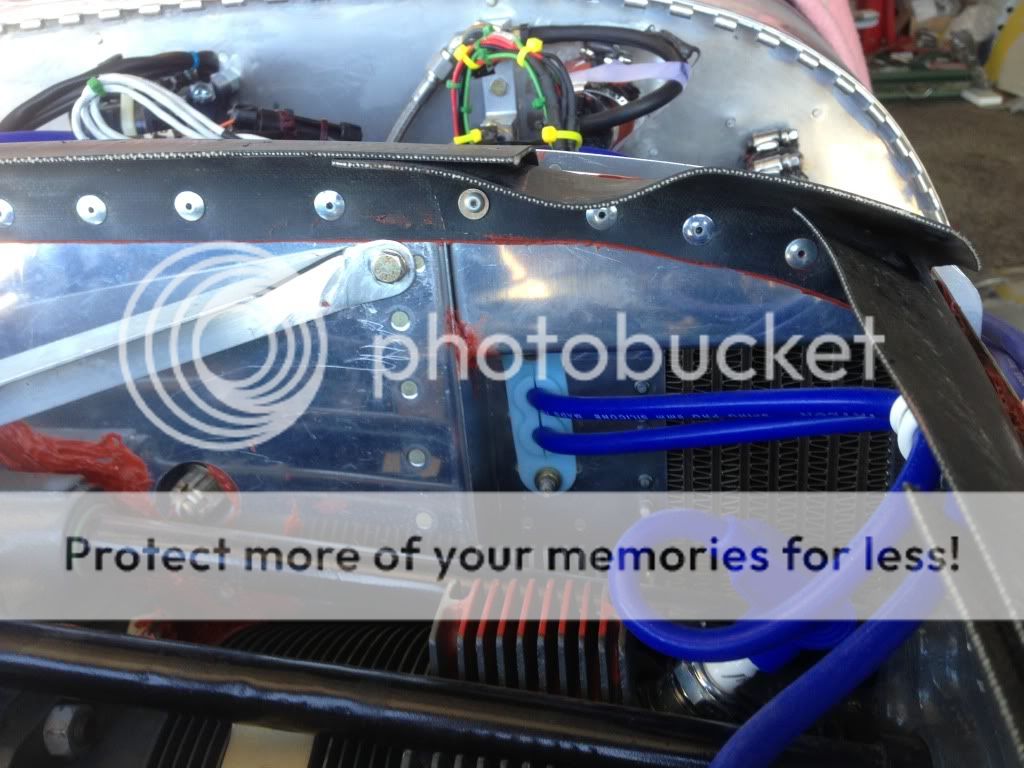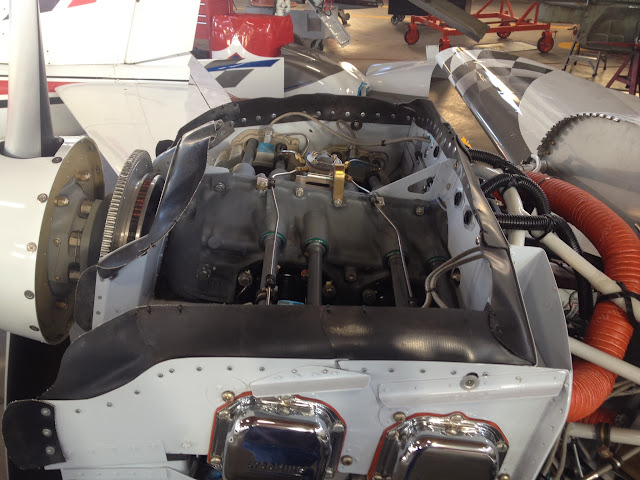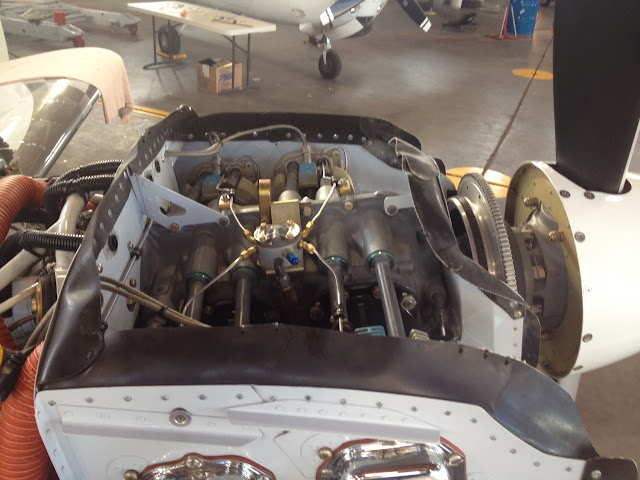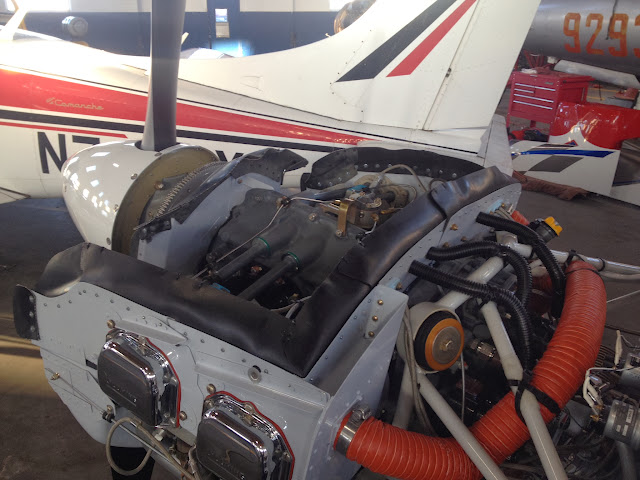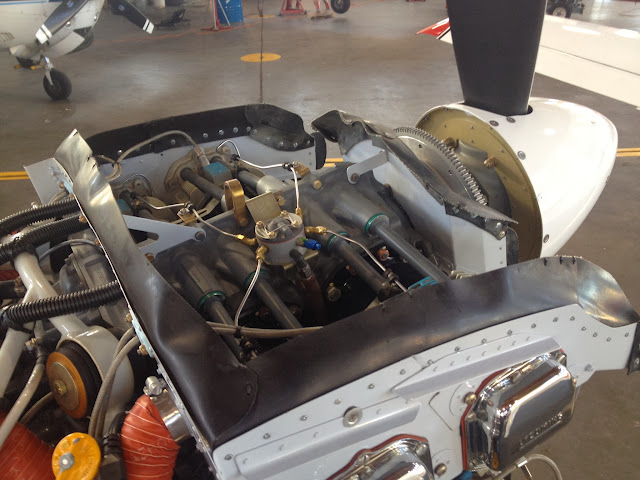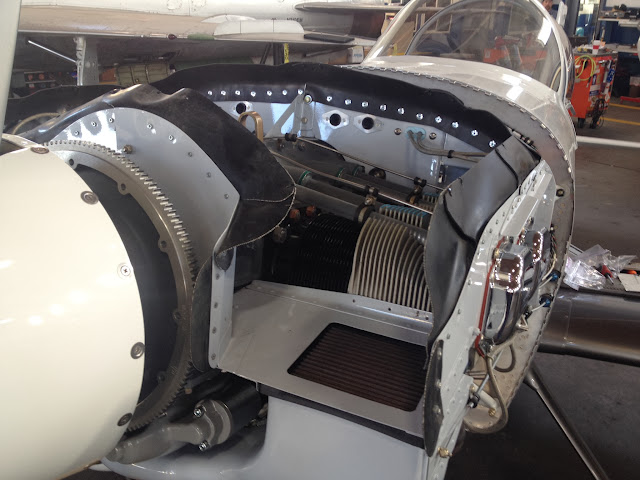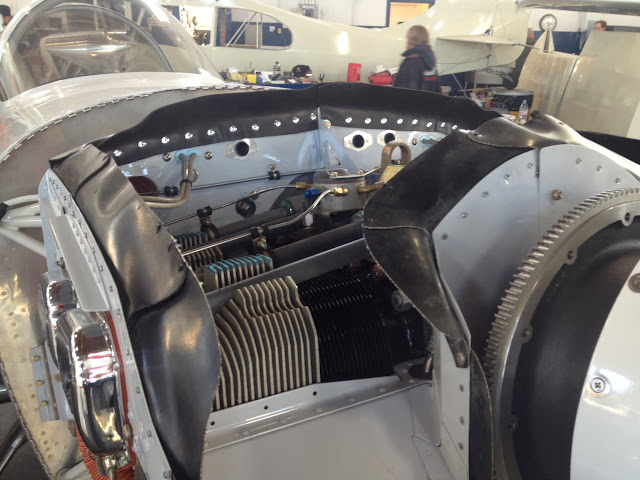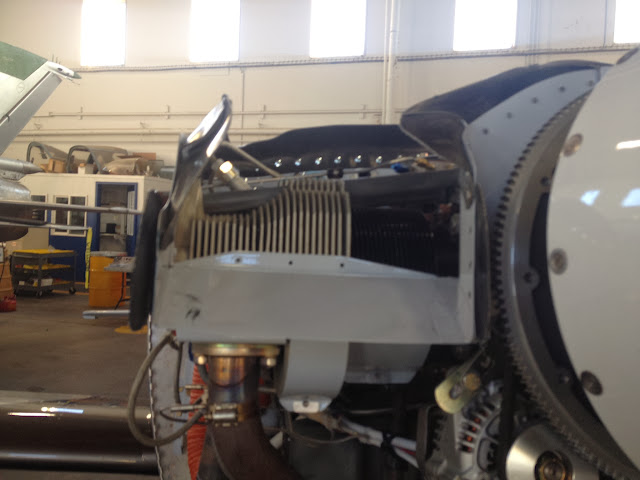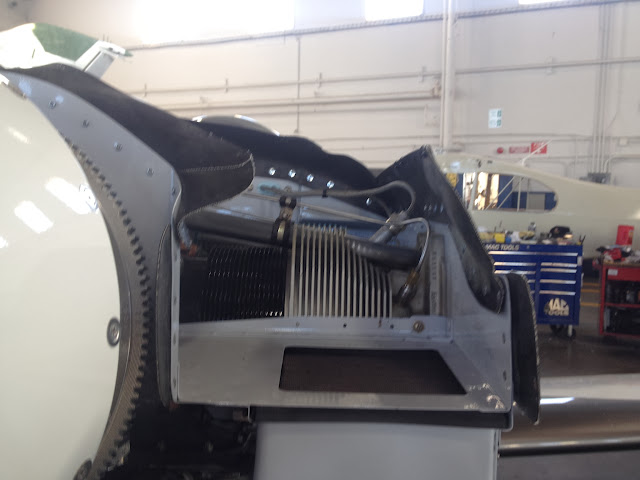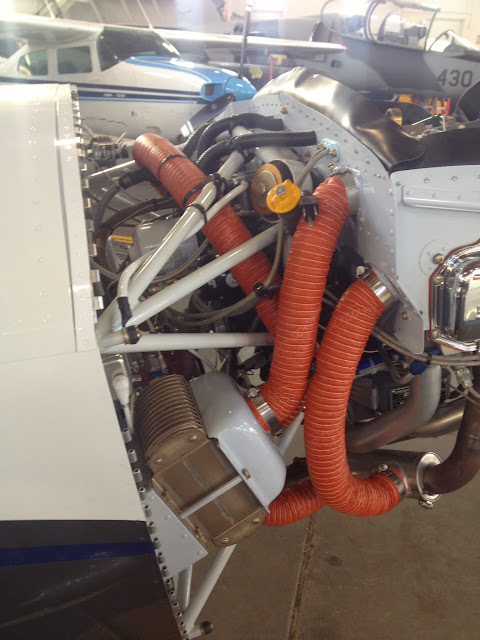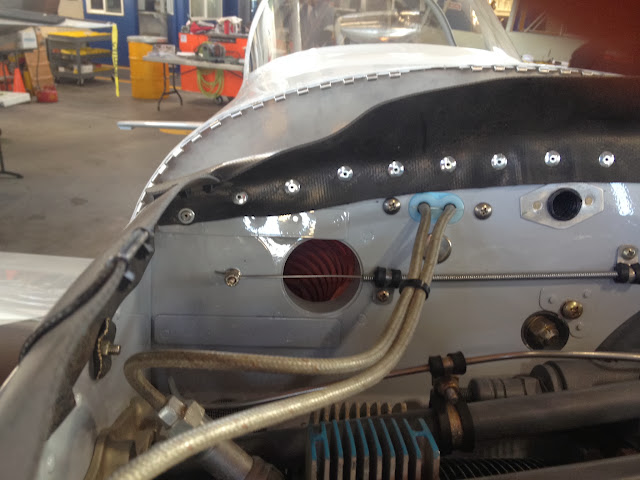First, the guys like Gary, and Mel and others that have mentioned timing are shmart fellers, and that can be a hidden item. I've seen racers bump their timing up just a degree or two, and then have to back off in a race, due to high CHTs. And baffle/plenum leaks are like a missing batt of insulation in your home…a small gap can make a large temp difference. Good things to check out!
For Bob:
I came across posting on VAF some time back were a member added a 1.5 to 2 inch roll over exit and said it helped with cylinder temps 15 deg. I think the RV8's have that in the kit any pictures on that mod anyone could post as I want to try that mod on my RV6.
Thanks
Bob
I did that firewall radius mod last winter, as part of an exhaust reshape and cowl exit reduction experiment. My overall goal was to reduce cooling drag (mass flow) by reducing exit area, while adding the radius to help smooth the flow at the exit, and help streamline the flow with the ambient air flow. I wanted less mass flow, but more efficient flow. I was overcooling with a very large exit, so I was willing to accept slightly higher temps in trade for overall speed and efficiency. This is opposite of what Erik is trying to achieve (cooler temps), but I'll circle back to that at the end.
The radius was highly recommended by Steve Smith, who gave me a great deal of good advice in this project! Because I also reshaped my exhaust pipes to be closer together and angled down less, I continued the radius into a SS belly pan, which was recommended by Dan H (much thanks to Steve and Dan for their great ideas!).
The width of my firewall radius and my new exit opening was constrained by the custom engine mount for the 540. Both are limited to about 9" wide by mount tubes.
I formed the SS sheet into a radius by rolling it with a PVC pipe, much like we do with the rudder leading edge. I was shooting for a 3" radius, and got lucky (very lucky relative to my fabrication record of scrap generation!

) Added a flange to attach the radius to the firewall.
I was pretty aggressive in my exhaust reshape, and the pipes now have only about a 10-11 degree down angle (ala Paeser), so I added fiberfrax to the areas where the pipes passed the belly pan, taped in place with cowling heat tape:
I covered the belly pan with proseal before riveting, to try to seal the interface from air leaks and oil that might wick into the fiberfrax or the heat tape. Just wanted a nice tight fit. The edges were seamed with a roller seamer too.
Then it was match-drill (to the holes where I drilled out the rivets in the floor ribs), cleco into place and rivet:
Though I did rivet the upper flange to the firewall (for which I have been flogged by F1Boss Mark), I would use #10 CS screws were I to do it again, for engine mount inspection and serviceability (I'll be drilling those out and replacing them). That might not be a factor for standard 6 mounts, if there is no lower cross tube.
I flew the plane with the new radius and the old, larger exit on a X-C to a form clinic. Steve and I discussed the possibility that I might see slower speeds due to increased mass flow, thanks to the firewall radius, before I reduced the exit area. I did not do a 4-way test (time and weather constraints), but I did not see a slowing on that X-C with just the radius added. CHTs were cooler, but (big but), it was extremely cold on the X-C, so cooling would be better, and X-C speed might be enhanced by the temps. It may very well have been a little cooler and a little slower on a more normal OAT day. The firewall radius could very well have increased mass flow, which would be the expected result. I just can't prove it.
However, once I did reduce the exit size (phase II of the project), I did see higher temps and increased speed…both indications of decreased mass flow. I do see much more streamlined exhaust and oil flow lines on the belly (mostly exhaust). I no longer see evidence of reverse flow, as I did pre-mod. Here are a couple pics. First is the new exhaust shape and SS firewall radius, but old cowl opening; second is with new cowl exit shape (pre-paint). For the numbers guys, I went from about 1.8:1 exit to inlet (yes, that big!) to about .75:1. Temps are higher, but manageable, even in races…though challenged by a formation show at 107F (go figure!). Speed… +6-8 knots (honest! multiple tests and races show it). Going smaller will require a cowl flap, and I've got some skill-building to do to match what Dan did on his 8…but its under consideration!

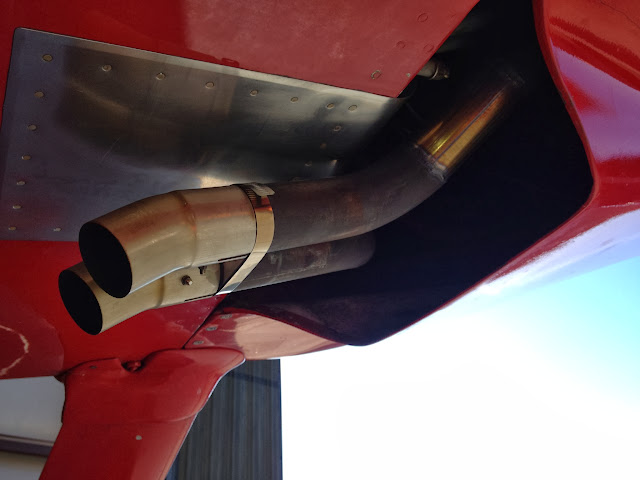
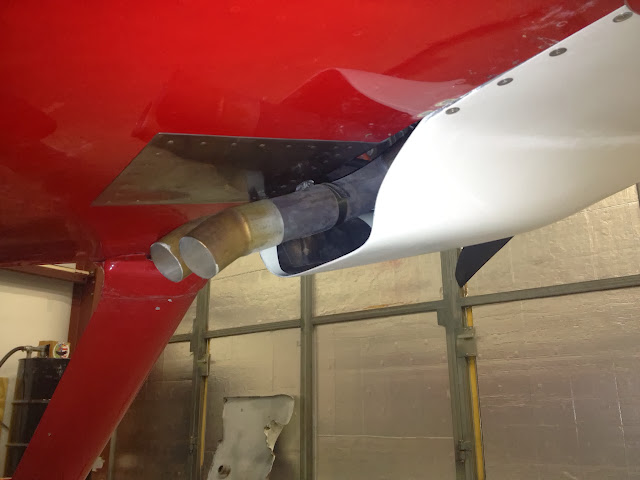
So Bob, I hope that helps on the radius project…holler if you want more details. I'm glad you brought it up here, as it may be another consideration for Erik (the radius by itself could increase mass flow and help cool the engine)..., once you check out (as Arnold would say), "za timing, za baffles, za flashing, za inlet ramps, and so on, and so force".

Cheers,
Bob



